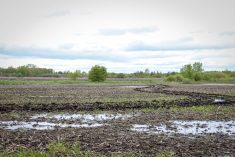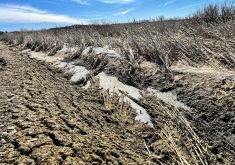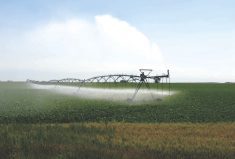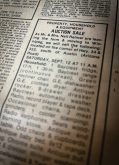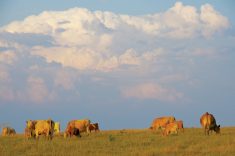It’s difficult for critics to pan the generosity and sheer altruistic will of people like Willard and Wyatt McWilliams, the father-son farmer duo who started the iconic 2002 Hay West campaign.
Likewise, too, the kindness of people like Vancouver Island farmer Bryce Rashleigh, who is selling his hay for rock-bottom prices and pulling together donations to cover transport to the drought-stricken farmers of the B.C. interior and Alberta.
“It’s totally off base to criticize anybody for being thoughtful and charitable,” said Danny Le Roy, an ag economist from Lethbridge, Alberta.
Read Also

June brings drought relief to western Prairies
Farmers on the Canadian Prairies saw more rain in June than they did earlier in the 2025 growing season
“People who work in primary agriculture, they know the importance of helping out a neighbour in need,” Le Roy told the Co-operator. “They’re there. They care.”
However, the charitable intentions of the founders didn’t shield Hay West 2002 from criticism.
In a 2003 article published in the Western Economics Forum, Le Roy and co-author K. K. Klein argued that while admirable, Hay West and fundraising campaign ‘Say Hay’ didn’t make sense.
“(Hay West) provided an excellent example of unintended economic consequences of government interference in agricultural markets,” wrote Le Roy and Klein.
While hay was donated, shipping was incredibly costly. They estimated it cost $1,000 per rail car to ship from Ottawa, Ontario (where Hay West was based) to Wainright, Alberta. This was two or three times the value of the hay.
The freight cost, while partly funded by private companies and individuals, was largely covered by the federal government.
“There’s a big difference between an undertaking that’s charitable and one that’s dependent on taxpayer transfers for its viability,” Le Roy told the Co-operator.
It should be noted that of the three Hay West-inspired programs in 2021, only one is publicly funded — the campaign organized by the Canadian Federation of Agriculture, which will get federal funding to cover freight. The CFA plans to buy hay at 10 cents a pound and sell it at the same price to western farmers.
Bryce Rashleigh of Vancouver Island is shipping his own hay east and selling it at cost while freight is covered by private donations. Mennonite Disaster Service (MDS) is also selling the hay at either 10 cents or seven cents a pound, depending on the quality. This will be used to help cover freight, the organization said in a news release. The organization is asking for donations to further subsidize transport.
Federal cash comes from somewhere, Le Roy said. If it goes to hay or to transportation, this means it’s being taken from somewhere else.
“There’s no costless choice here. The burden is being borne by somebody,” he said.
In addition, Le Roy and Klein wrote, hay was distributed by lottery to only a “handful of lucky individuals… while most received no assistance at all. It is highly unusual (and there is no justification) for distributing public funds by lottery.”
“It’s a classic example of farmers doing what only farmers can do — all the wrong things for all the right reasons,” wrote the late agriculture columnist Paul Beingessner in 2002.
“Much energy has been expended for a result so tiny that it borders on trivial,” he said. “We will receive 1,000 tons. We likely need a million.”
Hay West 2002 distributed about 30,000 tonnes of hay to 1,400 people, according to Bob Plamondon’s book Hay West: A Story of Canadians Helping Canadians.
Beingessner argued that, on top of minimal results, politicians were coming off as heroes and “eastern urban media” thought the problem was being solved, farmer to farmer.
The eastern farmers would have been better off stacking their hay on the front lawn of the House of Commons and insisting that the Chretien government deal with the problem in Western Canada, he wrote.
“The federal government clearly has a responsibility to solve a problem that has no parallel in Western Canada’s history. And it should exercise that responsibility in conjunction with provincial governments,” Beingessner wrote.
But, proponents say, the equation isn’t as simple as pure economics.
Bob Plamondon was a financial and organizational adviser to the Hay West campaign before going on to chronicle the story in a 2003 book.
He recorded a defence Hay West published in the Globe and Mail in October 2002. After correcting details on the volunteer basis of the campaign and how much hay was moving west, it took to task criticisms of federal funding.
The government funding was “modest,” wrote Hay West general manager Pierre Brodeur, and part of it went to cover fumigation — a cost the federal government imposed on them. Brodeur added they were realistic — they knew they hadn’t “saved the day,” as someone had criticized.
The campaign lifted the profile of suffering farmers, wrote Plamondon, which also had value.
It’s easy to say, after the fact, they could have helped more effectively, but “the reality is, the investment would have never been made,” he told the Co-operator.
Based on what Plamondon and Le Roy wrote, federal aid for farmers was minimal beyond existing risk management programs.
It’s a far cry from the hundreds of millions of dollars the federal and provincial governments promised in AgriRecovery programming this year.
Plamondon argued that critics must ascribe value to the psychological lift Hay West and its media coverage created for farmers.
“People who felt hopelessness and despair and that they were all in this alone saw that others cared about them, and that changed their mindsets,” he said.
Plamondon documented some of those responses in his book.
“We reduced our herd by one-half, and were wondering if the rest would have to go as well,” wrote Laura Towers from Alliance, Alberta. Her son’s name was drawn in the hay lottery.
“When my husband and son came in for lunch, the looks of joy and relief on their faces was something worth seeing and remembering for a long time,” she said.
Volunteers at Hay West’s makeshift office took calls from distressed farmers out west. Plamondon writes about one particularly disturbing call from a farmer who called to say he had just killed off most of his starving herd and was sitting in his living room with the gun on his lap.
One volunteer listened compassionately while another called the RCMP. The farmer subsequently credited Hay West with saving his life.
Ultimately, Plamondon argues, Hay West is a nation-building story.
“Coming into 2002, more westerners than ever believed they gave far more than they got from Confederation,” he wrote. Many believed they’d be better off separating from the East.
“The notion of a group of farmers from Eastern Canada, and in particular from Ottawa, coming to the aid of some drought-stricken farmers… was unimaginable to some,” Plamondon wrote.
Plamondon told the Co-operator he wrote the book to remind people that whenever one part of the country is hurting, we should all be thinking of how to help.
“I’m hoping for inspiration,” he said.
For more content related to drought management visit The Dry Times, where you can find a collection of stories from our family of publications as well as links to external resources to support your decisions through these difficult times.








